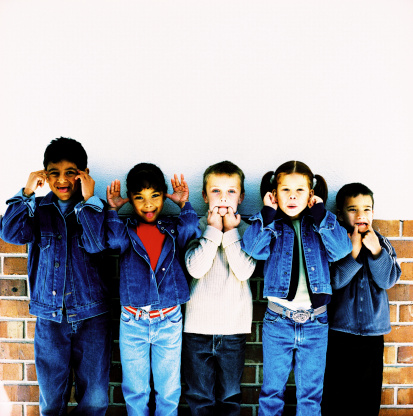
Noticing a trend? Three Hour Work Cycle. Three Period Lesson. Three Years in each Plane of Development… Montessori sure likes her threes. You'll notice, too, that the generally recommended time in any Montessori classroom is three years. Why is that? And is it really that important?
The easy answer is that the three-year cycles of the Montessori classrooms match the Planes of Development they serve. So, children may be in an Infant/Toddler program from 0-3, an Early Childhood program from 3-6, a Lower Elementary program from 6-9, Upper Elementary from 9-12 and so on. But while we know that children in each of these multiage classrooms will be generally in the same developmental range, there are benefits in the social structures of the classroom that happen as a result of the interaction of multiple children at multiple points in their own growth. Children within the same Plane of Development will still demonstrate distinct individual experiences, preferences, social roles, and learning, and the interplay of all those individual experiences will create some unique social structures that we want to preserve.
The first year in any given three-year classroom is a lot like the first period of the Three Period Lesson. It's an introduction to things, when children are getting on their feet. You might notice your socially gregarious child a little more hesitant in his or her first year in a new classroom. They are generally the smallest of the children in the space, and often the least confident, noticing the expertise of children who have been there for a while and feeling their way in a new society. The first year is often one of individual learning and focus, when children are aware and interested in each other, but figuring out who they are within this particular group. Think of them like freshmen: a little bumbling, curious and sometimes a little too eager, but not yet classroom leaders and not yet socially adventurous in the way they will be in future years.
From that metaphor, second year students are stereotypically sophomoric. They understand the rules of the classroom and they know their way around the place, but they don't necessarily want to be in charge. The second year is a time of repetition and practice, when learners explore more deeply the intellectual challenges of the classroom, but may not yet demonstrate mastery. They are highly social, ready to offer guidance to the first year students, but often less precise in presenting lessons to others. They're kinetic, moving from activity to activity and often repeating lessons you were certain they'd already grown tired of. Second year students are often well-intended goofs, confident enough to test the limits of the classroom, joyful and silly, comfortable in their own skins and delightful contributors.
The third year, though, is when all the work of the previous two years blossoms. Just like in the three-period lesson, the third year is an expression of mastery. This is when learners are intellectually prepared for the most challenging work, but when they also have developed enough maturity and understanding of the classroom culture to demonstrate real leadership. They can see problems and identify solutions for them. They are stronger mentors, more reliable in their chores and classroom contributions, and more predictable in their learning trajectories. They are ready to do the advanced work that they've been observing for two years, and ready to be the classroom leaders. While parents often skip this third year, it is, in many ways, when you get the best "bang for your buck" in Montessori, when learners are ready for the most challenging materials, when the preparation of the concrete materials, the habits of mind and the cognitive organization of the classroom come together to allow children to explore complicated, interrelated concepts in ways they were not ready for earlier. It's the full blossoming of mastery, and it's unique to the third year experience, dependent on all the experiences and discoveries the learner has made in the previous two years.
In each of these three-year cycles, learners are able to play every possible social role, novice, generalist, expert. They are able to explore their own potential at their own pace, noticing the examples of other children and practicing leadership as they are ready. And just like the three-period lesson, while we often want to rush children to mastery, the Montessori Method acknowledges that this development takes time for it to be authentic and internalized. A child in his or her second year in a cycle could be doing some pretty impressive stuff. But it's in the expressions of the third year that we observe the integrated mastery across the curriculum.
Multiage classrooms allow children to learn at their own pace and to learn from each other. Three-year cycles are the ideal multiage, offering children space and time to develop, to explore, to integrate and to master before moving on to the next challenge on the horizon.
#WorkCycle #misconceptions #threeyearcycle
